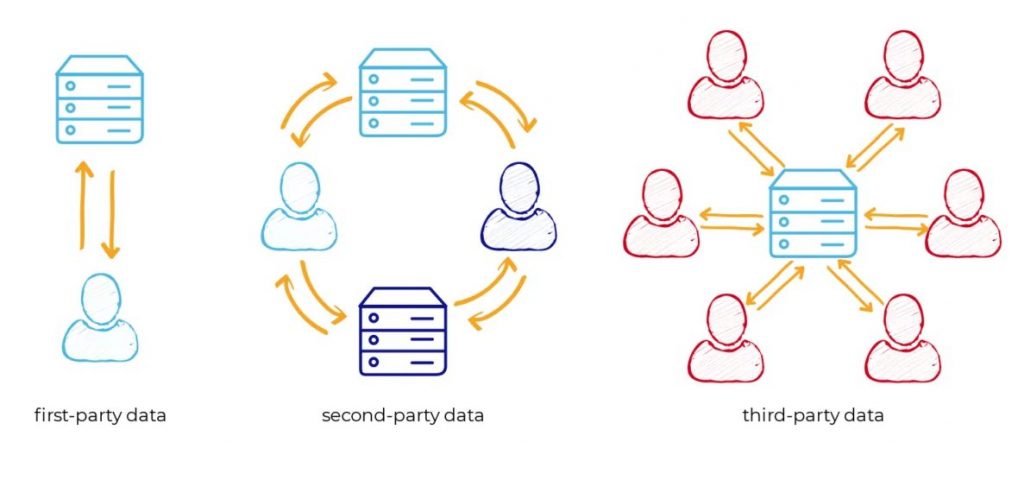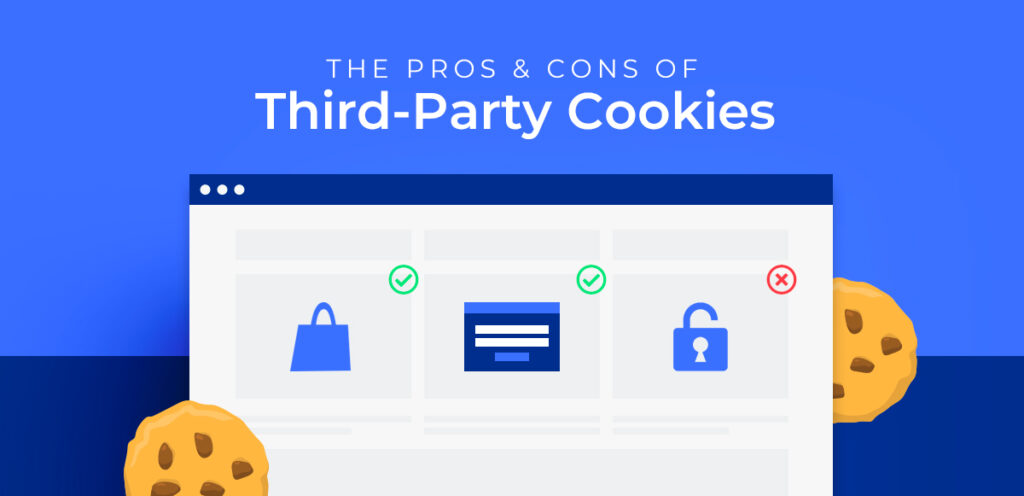Currently, both Google and Apple are stepping up to improve user privacy by removing third-party cookie use for most companies. Without data collection and analysis tools, the marketing industry will reel from the massive data loss that Google and Apple’s devices have made available.
Let’s learn all about third-party cookies, why they’re going away, and what is the best course of action afterward.
What Are Third-Party Cookies?

Third-party cookies are data collection tools by a third party other than the website being visited. These cookies can include advertisers, analytics companies, and social media platforms that may use information about your visit to this website to provide relevant advertisements on other websites.
Data from these cookies is used to create site metrics and provide information on browsing habits. This is used to make the site more useful for visitors and improve its performance.
Once Google and Apple’s phase-out commences, you won’t get opt-out prompts or have to turn them off your browser.
Why Are Third-Party Cookies Going Away?

Google and Apple are pushing for third-party cookie bans to answer their user’s high demand for increased privacy and personalization. Google is pushing to use email-based identifiers and Federated Learning of Cohorts (FLoC), prioritizing user privacy above commercial advertising data usage.
With the growing concern of many consumers regarding their privacy online and the increasing international laws that make current data collection problematic for many companies and advertisers, the move to do away with third-party cookies is only logical.
Alternatives to Third-Party Cookies

Many businesses and advertisers use third-party cookies collected by various platforms in implementing website improvements and serving real-time targeted and rebound advertising. However, the departure from third-party cookies gives way to new digital marketing practices that combine modern and traditional methods in the process.
Use One-To-One Marketing
One-to-one marketing is an advertising strategy that targets one customer with one message, in an effort to generate a response. Companies often use one-to-one marketing to reach out to a customer base and can be done via email, direct mail, or through digital channels like Facebook or Twitter. In this light, email and social marketing becomes viable channels for implementing this strategy.
Create Your Internal First-Party Data Infrastructure

With the departure from Google and Apple’s data-gathering cookies, businesses must create their own first-party data infrastructure.
Data can be collected from a variety of sources, including customer interactions, product and service usage, and social media data. Once the data is collected, it should be placed in an organized structure with a set of standards that anyone in the company can follow. This organization is key to creating a usable data infrastructure that any department in the business can access.
Go For Traditional Digital Networking
Traditional digital networking (or word-of-mouth) is when a person tells another person about a business or product. It’s the original form of social media and its role in marketing is to help companies get their products or services into the hands of potential customers. Traditional digital networking results from effective one-to-one marketing, generating a network of highly interested customers with a high likelihood of purchasing and staying loyal to the brand.
Closing
With digital big brands doing away with third-party cookies, it doesn’t mean the end of digital marketing entirely. Adaptability by using the following methods and creating an enriching experience through first-party data you collect are the key towards business adaptability as the world finally moves from third-party cookies.
